פרסומים
-
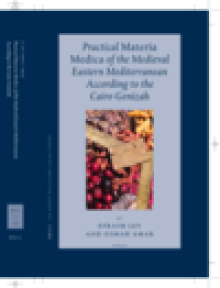
-
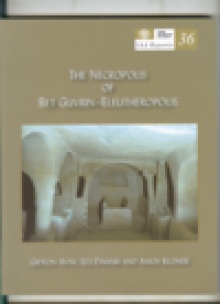
-
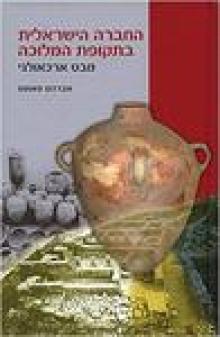
-
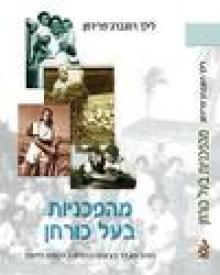
מהפכניות בעל כורחן: נשים ומגדר בציונות הדתית בתקופת היישוב
תקצירנשים ציוניות-דתיות- הבורגניות, החלוצות והלוחמות- שלקחו חלק פעיל בבניין הישות הציונית בארץ ישראל, הן גיבורות הספר הזה. סיפורן נשכח כמעט לגמרי. נפרש כאן, בעזרת חומר ארכיוני רב היקף, עולמן האישי והקולקטיבי - ארגוניהן, מקומן בהתיישבות הדתית, חלקן במאבק הביטחוני על הקמת היישוב והנועזות המגדרית שעלתה מעשייתן. אף על פי שרובן לא יצאו באמירה נגד התפיסות המיגדריות המסורתיות, הרי שבמעשיהן ניתן למצוא ראשיתה של חתירה כנגד הדגם הנשי המסורתי.
הדימוי הוותיק של הבת הדתית שעוצב בהתאם לתפיסה "כל כבודה בת מלך פנימה" פינה את מקומו לזהות הנשית החדשה שלא הדירה עצמה מתחומי הפעילות "הגבריים" ביותר.
החשדנות המגדרית נבעה בעיקרה מפרגמטיזם, כשהצורך הלאומי הוא שהכריע. ובכל זאת העשייה הנשית יצרה סדקים במערכת המגדרית המסורתית שהציונות הדתית ביקשה לשמר. לסיפורן של הנשים הציוניות - דתיות חשיבות רבה אפוא לא רק כשלעצמו אלא גם לגבי ההגדרה של הציניות הדתית, ושל הנשיות הדתית המודרנית.
הזהות הנשית- דתית החדשה לא השתרשה בחברה הדתית במשך שנים רבות. חשש הציונות הדתית מעיבוד העוגן המסורתי הביא להצנעת הסיפור הנשי. גם הנשים עצמן לא היו נועזות דיין כדי לקבוע את המשך השינוי. הן לא ניצלו את חלון ההזדמנויות שנפתח בפניהן בתקופת היישוב. סוגיית נשים ומגדר בציונות הדתית אף מאששת תובנה כללית, ולפיה הפנמת ערכים חדשים הקשורים באישה כרוכה בתהליך ארוך ומורכב המצריך גם בשלות ומוכנות נפשית להגשמת השינוי, תחילה בקרב הנשים ואחר כך בקרב החברה כולה. -
ירושלים וארץ ישראל (6)
תקציר -
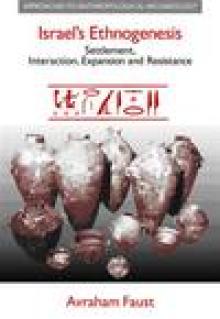
Israel’s Ethnogenesis:Settlement, Interaction, Expansion and Resistance
תקצירSeries: Approaches to Anthropological Archaeology, edited by Professor Thomas E. Levy, UC San Diego
Subject: Archaeology
Readership: upper level undergraduates and postgraduates
Pub date: April 2007 244 x169 mm, 288pp, 17 black and white line drawings
ISBN: HB 978 1 904768 98 2 £75/$115
Description:
The emergence of Israel in Canaan is perhaps the most debated topic in biblical/Syro-Palestinian archaeology, and related fields. Accordingly, it has received a great deal of attention in recent years, both in scholarly literature and in popular publications.
Generally speaking, however, the archaeology of ancient Israel is wedged in a paradoxical situation. Despite the large existing database of archaeological finds (from thousands of excavations conducted over an extremely limited area) scholars in this (sub)discipline typically do not engage in "theoretical" (anthropological) discussions, thus exposing a large gap between it and other branches of archaeology, in this respect. Numerous ‘archaeologically oriented' studies of Israelite ethnicity are still conducted largely in the spirit of the ‘culture history school', and are absent of thorough reference to the work of more recent critics, which, at best, make a selected appearance in these analyses.
Israel's Ethnogenesis provides an "anthropologically-oriented" perspective to the discussion of Israel's ethnogenesis. The book traces Israel's emergence in Canaan, and the complex processes of ethnic negotiations and re-negotiations that accompanied it. This monograph incorporates detailed archaeological data and relevant textual sources, within an anthropological framework. Moreover, it contributes to the ‘archaeology of ethnicity', a field which currently attracts significant attention of archaeologists and anthropologists all over the world. Making use of an unparalleled archaeological database from ancient Israel, this volume has much to offer to the ongoing debate over the nature of ethnicity in general, and to the understudied question of how ethnic groups evolve (ethnogenesis), in particular.
Table of contents
Table of contents:
Part One: Introduction
1. Introduction
2. Archaeology and Ethnicity
3. Israelite Ethnicity: State of ResearchPart Two: An Archaeological Examination of Israelite Ethnicity
4. Israelite Markers and Behavior
5. Meat Consumption
6. Decorated Pottery
7. Imported Pottery
8. Pottery Forms and Repertoire
9. The Four Room House
10. Circumcision and Ethnicity
11. Hierarchy and Equality: The Roots of the Israelite Egalitarian EthosPart Three: Israel's Identity and the Philistines
12. Settlement Patterns in Iron Age I - Iron Age II Transition
13. Ethnicity and Statehood in Ancient Israel
14. The Philistines in the Iron Age I
15. Totemism to Ethnicity: The Philistines and Israel's Self-IdentificationPart Four: Merenptah's Israel: The Beginnings
16. Merenptah's Israel: Israel in the Late 13th Century BCE
17. Israel's Emergence: The Beginnings
18. Origins ReconsideredPart Five: Aspects of Distribution
19. Pots and Peoples Revisited: Israelites, Philistines and Canaanites
20. Transjordan Revisited
21. Summary and Conclusions -
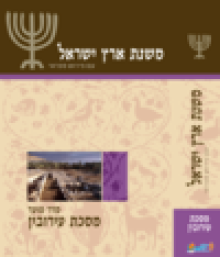
משנת ארץ ישראל - מסכת עירובין
תקצירמשנת ארץ ישראל" היא פירוש חברתי והיסטורי למשנה. את הפרויקט התחילו יחד פרופ' שמואל ספראי ובנו פרופ' זאב ספראי. בשנת תשס"ג הצטרפה פרופ' חנה ספראי (האחות של זאב). זמן קצר לאחר מכן הלך האב לעולמה בשיבה טובה. זאב וחנה המשיכו בלימוד סדר נשים וטהרות. עם פטירתה של חנה בשנת תשס"ח ממשיך זאב לבדו (בינתיים). ספראי האב והבן סיימו לכתוב 17 כרכים ראשונים (פירוש לסדר זרעים ומועד),ומאז תשס"ג השלים זאב את כתיבתם של 15 כרכים נוספים.
לפרטים נוספים: http://www.kehilanet.co.il/ViewPage.asp?pagesCatID=364&siteName=kvYavne
-
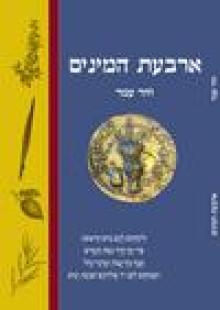
ארבעת המינים
תקציראסופת מאמרים זו עוסקת במגוון היבטים הלכתיים ורעיוניים הקשורים לארבעת המינים מבחינה בוטנית, היסטורית וארכיאולוגית.
במאמרים נדונות סוגיות שונות: זיהויים של ארבעת המינים, כיצד באופן סמלי הם מייצגים את נופה הטבעי והחקלאי של ארץ-ישראל, האם ניתן לקבוע כיצד נראו זני האתרוגים בתקופת חז"ל וממתי החלה תופעת האתרוגים ה'מורכבים'. לצד אלו עסקנו גם במנהג הקדום - תוספת בדי הדס - ובגלגוליו עד ימינו, זיהוי הערבה הכשרה ובסוגיית זמינותם של ארבעת המינים בקהילות אירופה וההשלכות ההלכתיות שנבעו מכך.



